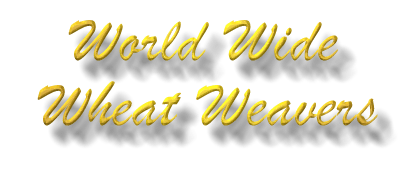
|
|||
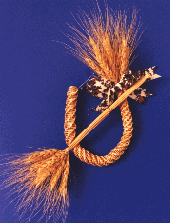
|
Is it "Corn Dolly Plaiting" or "Wheat Weaving"?Objects made from dried straw are known to have been made in the earliest civilizations, practiced throughout Europe, Asia and South America. Harvest rituals occurred in every country where grain is grown in order to please the spirits of the crop. Abstract shapes or religious symbols made from straw were believed to insure prosperity and good luck in the next growing season. |
||
|
Objects made with the heads of grain still on the stem were hung on inside walls where they safely made it through the winter. These sacred grains were then planted the next season to assure the fertility of the entire crop. |
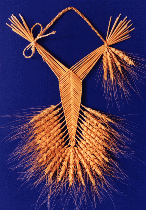
|
||
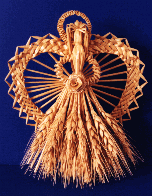
|
The main straw sources are wheat, oats, rye and barley. The British lump all of these grains into the generic term "corn." Making grains into doll shapes for the harvest festivals led to naming straw objects as "corn dollies". |
||
|
Wheat is the straw of choice for most projects because of inherent problems with the other grains. Rye is long and thinly tapered, and very stiff to work with; oats are smooth and waxy, making it very difficult to hold a shape, and barley is too short and brittle for most projects. |

|
||
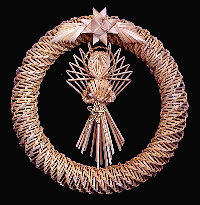
|
In England, the procedure is still often called "corn dolly plaiting", but since the craft caught on in the United States in the late 1970's, and the straw of choice was wheat, the term "wheat weaving" was coined and is becoming the recognized name of this folk art form. |
||